LG G2 and MSM8974 Snapdragon 800 - Mini Review
by Brian Klug on September 7, 2013 1:11 AM EST- Posted in
- Smartphones
- LG
- Mobile
- LG G2
- Android 4.2
- MSM8974
- Snapdragon 800
GPU Performance
Snapdragon 800 features Qualcomm's Adreno 330 GPU. Qualcomm hasn't stated publicly how Adreno 330 compares to Adreno 320 featured in Snapdragon 600, but it's almost certainly a larger GPU. The 8974 implementation in LG's G2 clocks the Adreno 330 GPU at a maximum of 450MHz, yet we see better performance than the 450MHz Adreno 320 in Snapdragon 600 - lending credibility to the idea of having more execution resources. There's also an 8974AB variant which includes a 100 MHz bump in GPU clocks up to 550 MHz.
3DMark
3DMark for Android features the Ice Storm benchmark and uses OpenGL ES 2.0. Ice Storm is divided into two graphics tests and a physics test. The first graphics test is geometry heavy while the second test is more pixel shader intensive. The physics test, as you might guess, is CPU bound and multithreaded. The overall score takes into account both graphics and physics tests. The benchmark is rendered to an offscreen buffer at 720p/1080p and then scaled up to the native resolution of the device being tested. This is a very similar approach we've seen by game developers to avoid rendering at native resolution on some of the ultra high resolution tablets. The beauty of 3DMark's approach here is the fact that all results are comparable, regardless of a device's native resolution. The downside is we don't get a good idea of how some of the ultra high resolution tablets would behave with these workloads running at their native (> 1080p) resolutions.
For these benchmarks we stuck with the default presets (720p, normal quality).
3DMark performance generally fell very close to Qualcomm's MSM8974 MDP/T, with one exception. The CPU bound physics tests had the G2 far lower down the list than I would've expected. Given that test is mostly a multithreaded CPU benchmark, it's entirely possible that the G2's thermal/frequency governors are set more conservatively there. The performance gains elsewhere over Snapdragon 600/Adreno 320 are huge, but 3DMark can be very influenced by CPU performance so it's not clear how much of this advantage is due to Adreno 330 or Krait 400.
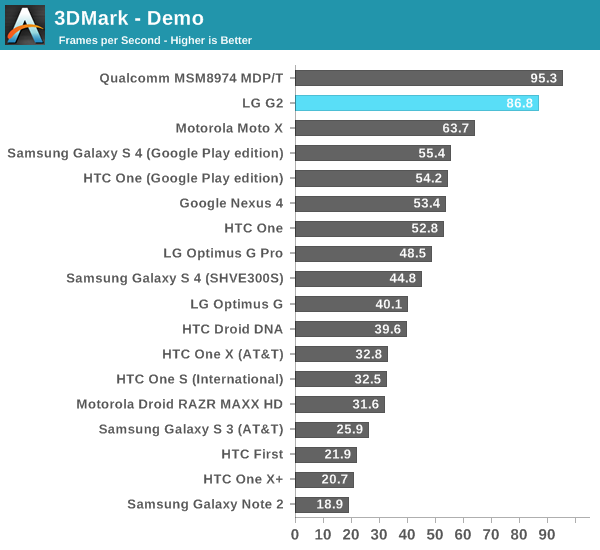
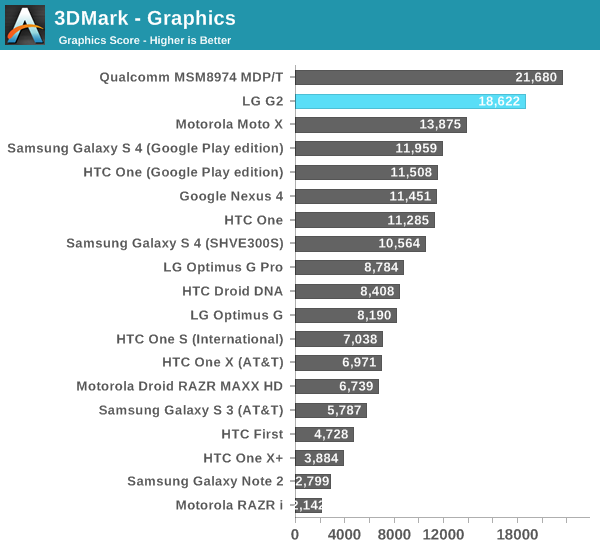
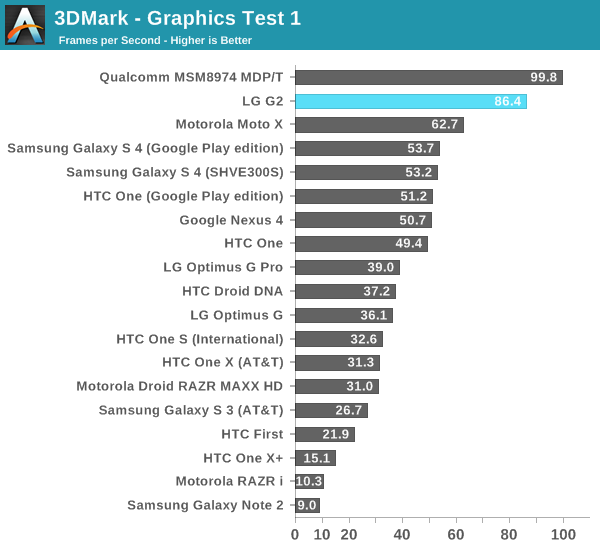
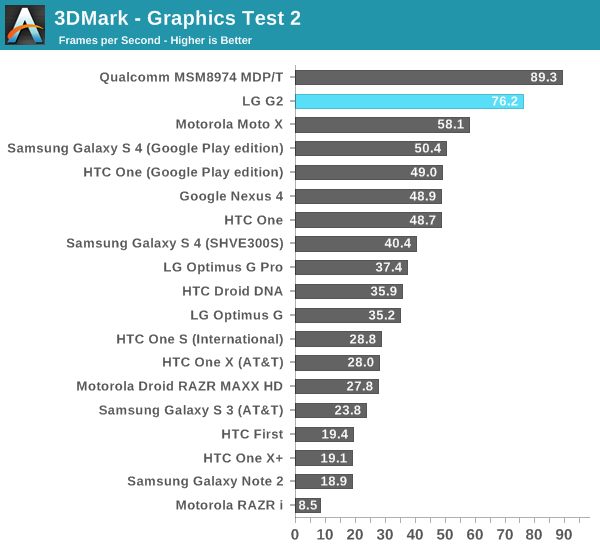
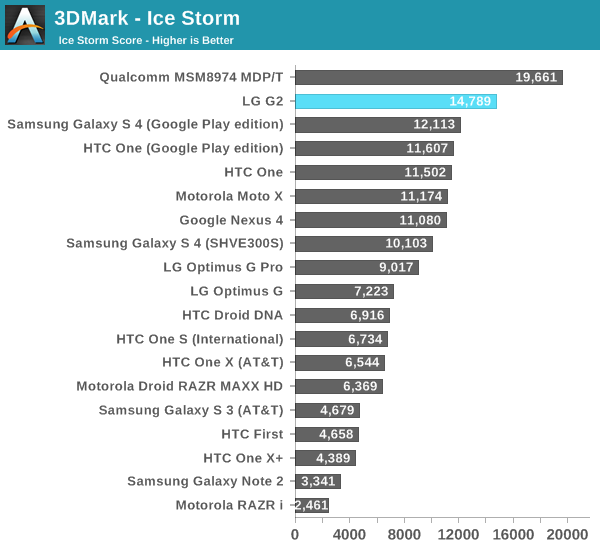
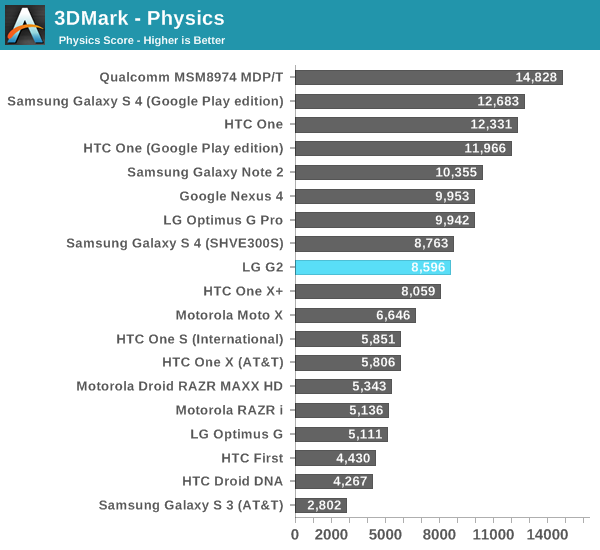
GFXBench 2.7
GFXBench (formerly GLBenchmark) gives us some low level insight into these platforms. As usual, we'll start with the low level tests and move onto the game simulation benchmarks:
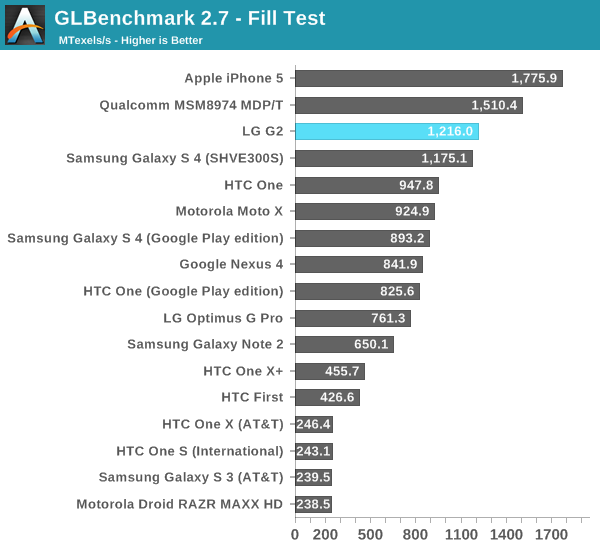
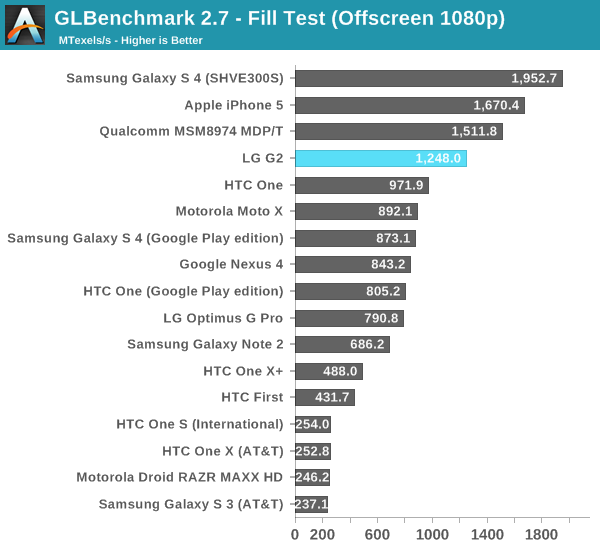
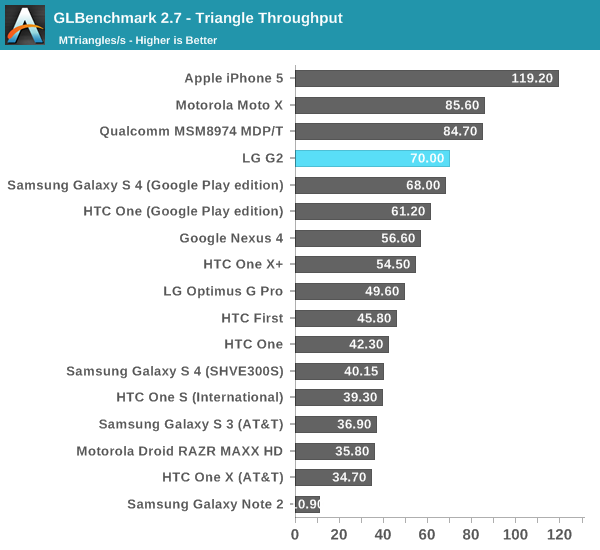
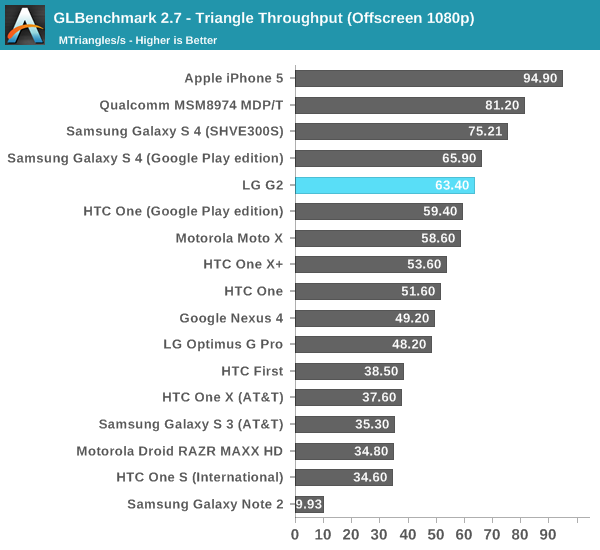
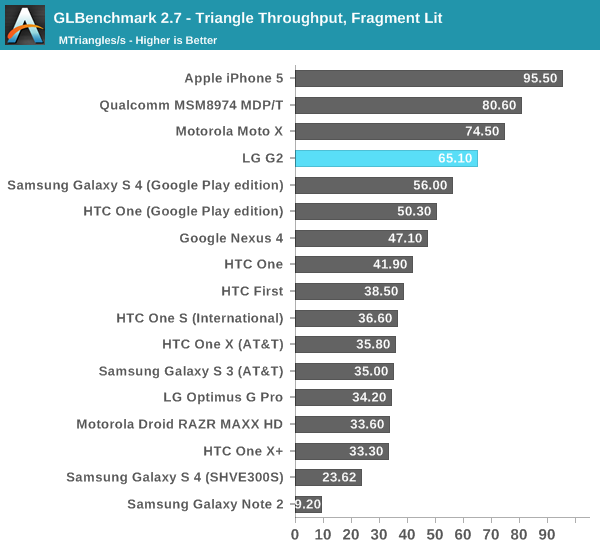
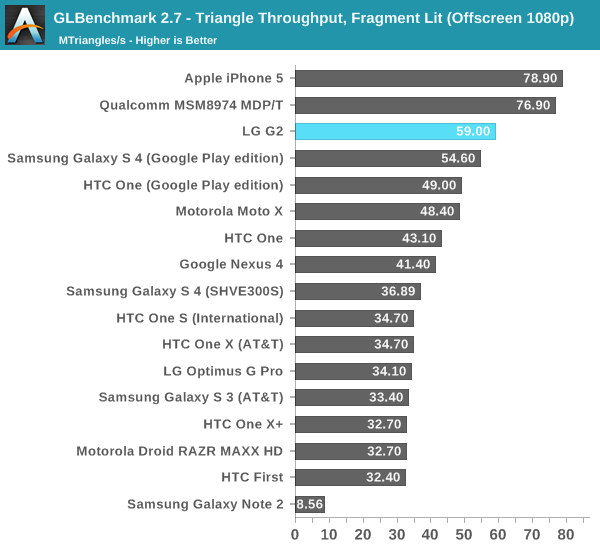
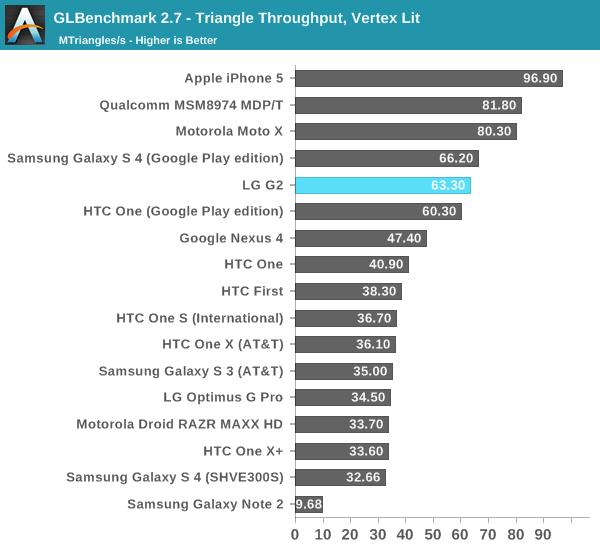
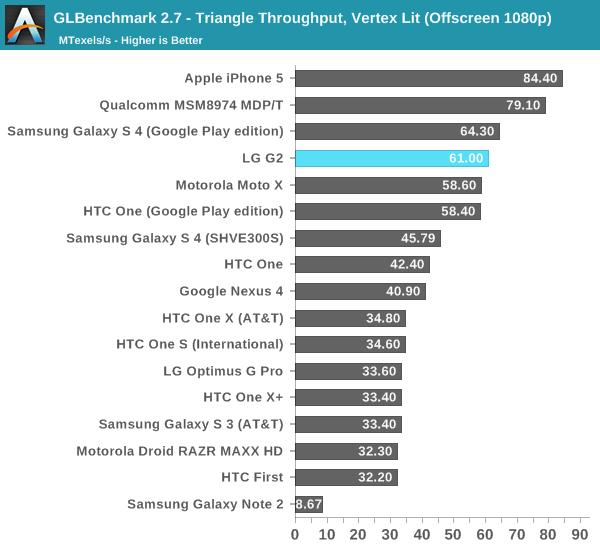
The low level tests put the G2 closer in performance to some of the Snapdragon 600 based devices than the MDP/T, again early software at work here. The T-Rex HD performance looks pretty good, putting the G2 between the S600 devices and S800 MDP/T.
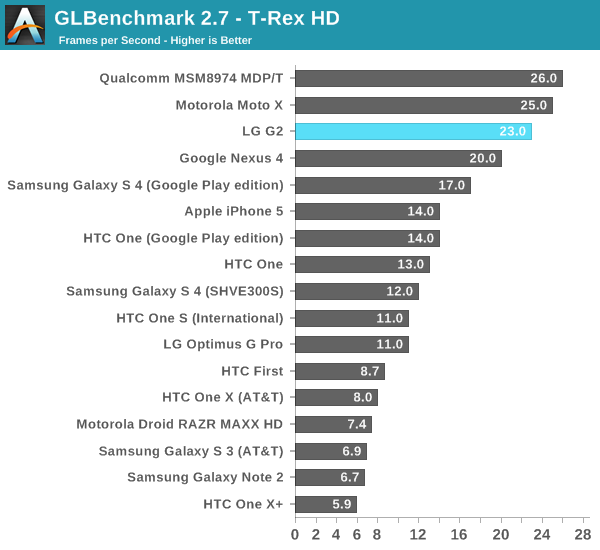
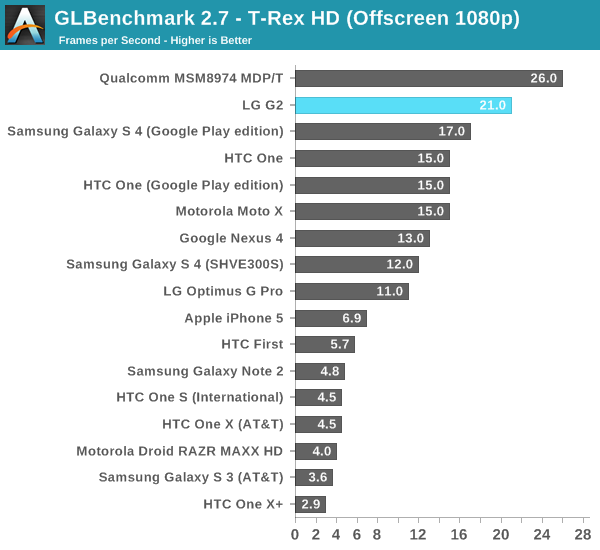
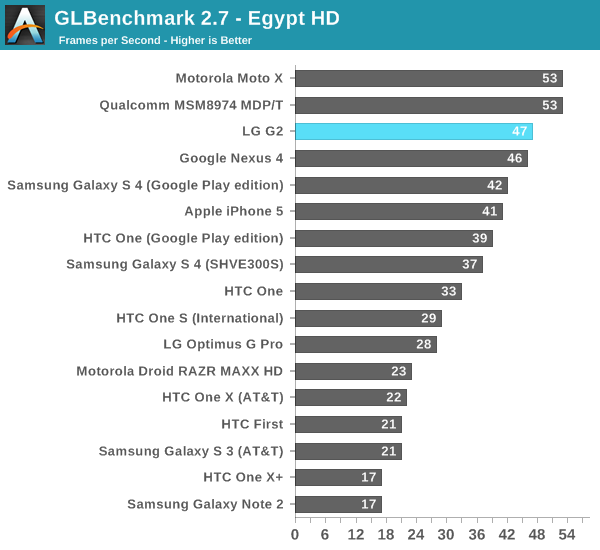
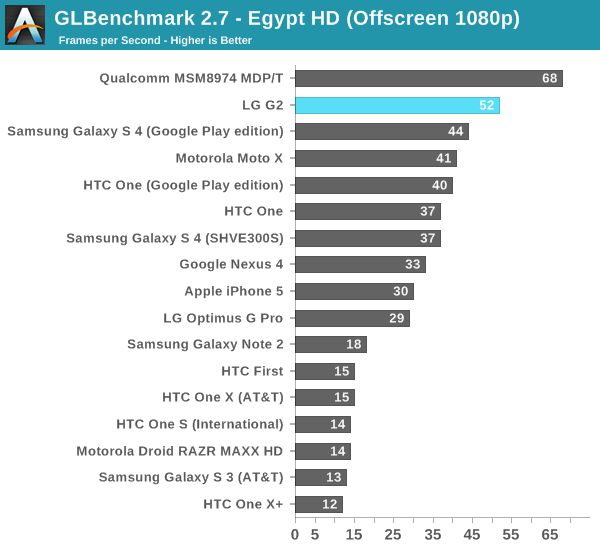
Basemark X
Basemark X is a new addition to our mobile GPU benchmark suite. There are no low level tests here, just some game simulation tests run at both onscreen (device resolution) and offscreen (1080p, no vsync) settings. The scene complexity is far closer to GLBenchmark 2.7 than the new 3DMark Ice Storm benchmark, so frame rates are pretty low:

Basemark X performance tracks with what we saw in the GFXBench T-Rex HD test. Performance is clearly higher than on any other device, but not quite up to MDP/T levels. I wonder how much closer the final device will get.
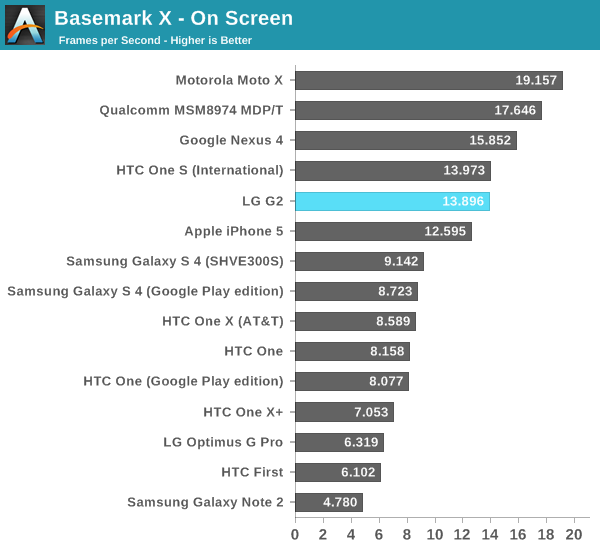
Epic Citadel
Epic's Citadel benchmark gives us a good indication of lighter workload, v-sync limited performance at native resolution. At 1080p, the Snapdragon 800 MDP/T offers over 50% better performance than the Snapdragon 600 based platforms. Granted we're comparing to smartphones here so there's some thermal advantage playing to the 800's favor.
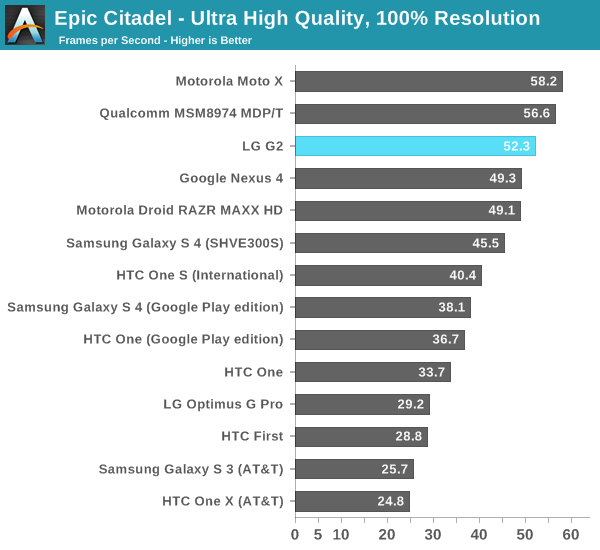










120 Comments
View All Comments
neoraiden - Sunday, September 8, 2013 - link
I was considering the qx100 but the price is out of my range as I don't take enough photographs to spend that much, am considering the qx10 though at that price point I wonder if a canon 240hs would suffice.Arnulf - Saturday, September 7, 2013 - link
"Gone are the days of 1.4V to hit near-2GHz frequencies it seems, instead 8974 will hit 2.3 GHz at around 1V"About fuggin time - my 2006 vintage 65 nm Core2 runs at 2.13 GHz at less than 1.1V. I was under the impression that smaller lithography process allows for lower voltages so they should have been well under 0.9V for 2 GHz by now.
Drumsticks - Saturday, September 7, 2013 - link
You are comparing two different companies' completely different CPUs, ARM vs x86 too. My 4670k will do 4ghz stable on a volt. The nature of smartphone SoCs vs full CPUs is very differentmadmilk - Saturday, September 7, 2013 - link
Your Core 2 also consumes 10 watts idling, despite the use of high-k dielectrics that TSMC only recently started using. HP trades off leakage for high clock speeds and low voltages.FwFred - Saturday, September 7, 2013 - link
You are comparing a platform with 3 discrete chips instead of one, and way more high voltage IO interfaces. Try a modern x86 SoC: Haswell ULT, Bay Trail, or Clover trail for a more fair comparison for idle power.His point was top clock speed vs. voltage. A completely different topic.
Krysto - Sunday, September 8, 2013 - link
From what I've read, it's becoming very hard to use the same litography process at smaller nodes, and they need to move to a new litography technology (ultraviolet litography, I think), but that's years away from being ready, too, and might not be until 14nm or even 10nm.unipidity - Saturday, September 7, 2013 - link
I would just like to comment that articles like this are one of the reasons Anandtech will continue to get my traffic long into the future. Brian's "mini-review" is head and shoulders above any "full" review I come across on most tech review sites. Anandtech is never ever first to print, at least on phones, but when it comes to properly informing my purchasing decisions, nothing comes else comes close. Keep up the good work.Impulses - Saturday, September 7, 2013 - link
+1000UltraWide - Saturday, September 7, 2013 - link
Why are the comparison devices different throughout the tests?This inconsistency makes it hard to compare the G2 to another device.
nerd1 - Saturday, September 7, 2013 - link
Funny fact is the domestic version of G2 supports both microSD and switchable battery (albeit slight smaller). Obviously US customers are too tamed to apple devices and they won't need such features.